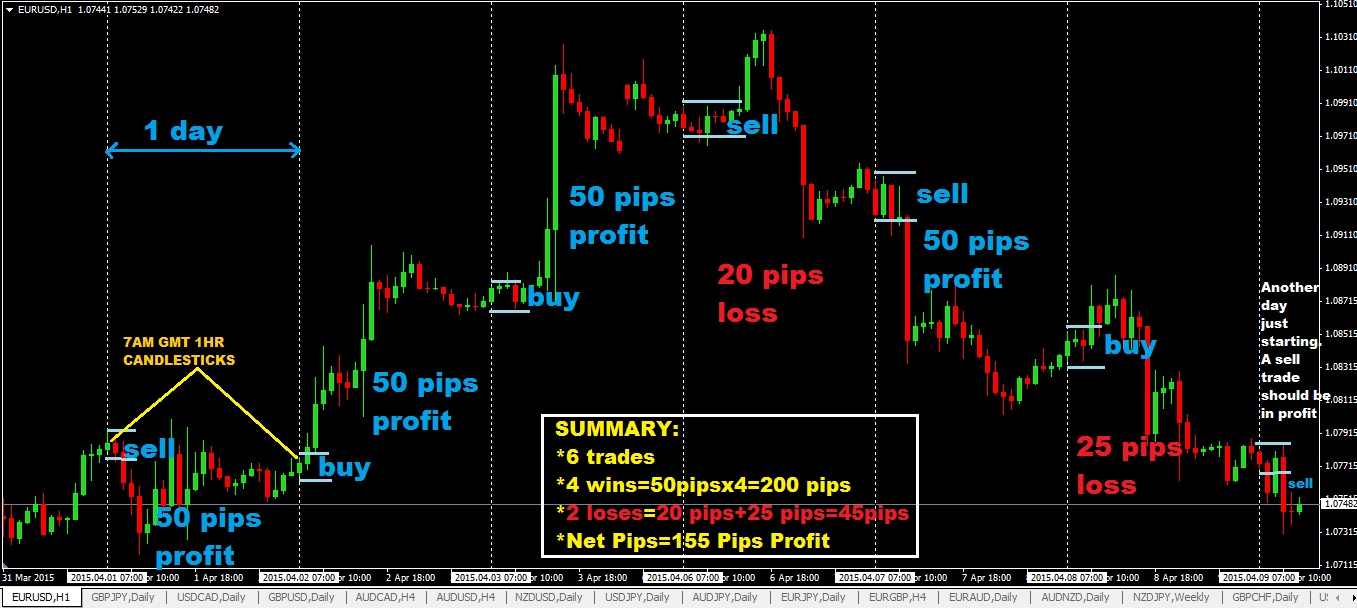Did you know that the stock market has more ups and downs than a roller coaster? Timing your day trading stock purchases can feel just as thrilling! This article delves into the optimal moments for buying stocks, factoring in market hours, volatility, and economic reports. You'll discover how news impacts your trades, the best days of the week for day trading, and strategies for identifying entry points. We’ll also cover the significance of technical analysis, managing risk, and the role of pre-market trading. With insights from DayTradingBusiness, you'll learn to navigate market trends and avoid impulsive decisions, ensuring your trades are as calculated as they are exciting.
When is the best time to buy stocks for day trading?
The best time to buy stocks for day trading is typically during the first hour after the market opens, from 9:30 AM to 10:30 AM. This period often sees the highest volatility and trading volume, providing better opportunities for quick profits. The last hour before the market closes, from 3 PM to 4 PM, can also be advantageous, as traders reposition their portfolios. Focus on market news and events, as they can influence stock movements throughout the day.
How do market hours affect day trading strategies?
Market hours significantly influence day trading strategies because they dictate when traders can buy and sell stocks. During regular trading hours, typically from 9:30 AM to 4 PM EST, liquidity is higher, leading to tighter spreads and better price execution. Traders often focus on the opening hour (9:30-10:30 AM) for volatility and potential rapid price movements due to news and overnight developments. The last hour (3-4 PM) can also present opportunities as traders reposition themselves before market close.
Outside regular hours, in pre-market (4 AM to 9:30 AM) and after-hours trading (4 PM to 8 PM), volume is lower, which can lead to wider spreads and increased risk. Day traders may use these times for setting up positions but should be cautious of less reliable price action. Ultimately, aligning your trading strategy with market hours can enhance profitability and reduce risk.
What indicators should I look for before making a purchase?
Look for these key indicators before making a day trading stock purchase:
1. Volume Trends: High trading volume can signal strong interest and potential price movement.
2. Price Action: Watch for significant price swings or breakouts from established support or resistance levels.
3. Technical Indicators: Use tools like moving averages, RSI, or MACD to gauge momentum and potential reversals.
4. News Catalysts: Monitor news events or earnings reports that could impact stock prices.
5. Market Sentiment: Analyze overall market trends and sentiment, including major indices and sector performance.
Combining these indicators can help you make informed trading decisions.
How does volatility influence my timing for stock purchases?
Volatility affects your timing for stock purchases by creating opportunities for profit and increasing risk. High volatility means prices can swing dramatically, allowing day traders to buy low and sell high quickly. However, it also increases the chances of losing money if the market moves against you.
To time your purchases effectively, watch for patterns in volatility. Consider buying during periods of high volatility when you spot a favorable trend. Conversely, avoid purchasing when volatility spikes unexpectedly, as this can lead to unpredictable price movements. Always have a clear exit strategy and stay informed on market news that could impact volatility.
Should I buy stocks at market open or close?
Buy stocks at market open if you want to capitalize on volatility, as prices can swing significantly in the first hour. This is ideal for quick trades. However, consider buying at market close for more stable pricing, as stocks often settle into their end-of-day values. Choose based on your strategy: aggressive traders may prefer the open, while more cautious investors might opt for the close.
What role does news play in timing my day trades?
News plays a crucial role in timing your day trades by influencing stock prices and market volatility. Key announcements, such as earnings reports or economic data releases, can create significant price movements. Monitoring real-time news helps you identify potential opportunities or risks, allowing for better decision-making. Use news alerts and financial platforms to stay updated and react promptly to market changes. This can enhance your entry and exit strategies, maximizing profit potential while minimizing losses.
How can I use technical analysis to time my stock buys?
To time your stock buys using technical analysis, focus on these key steps:
1. Identify Trends: Use moving averages to spot upward or downward trends. A crossover of short-term moving average above a long-term one can signal a buy.
2. Support and Resistance Levels: Determine price levels where stocks tend to reverse direction. Buy near support levels where prices historically bounce back.
3. Chart Patterns: Look for patterns like flags, triangles, or head and shoulders. A breakout from a bullish pattern can indicate a good buying opportunity.
4. Volume Analysis: Pay attention to volume spikes. A significant increase in volume during a price rise can confirm a strong buying signal.
5. Indicators: Utilize RSI (Relative Strength Index) to find overbought or oversold conditions. Consider buying when the RSI is below 30, indicating oversold conditions.
6. Candlestick Signals: Analyze candlestick patterns for bullish signals, like hammers or engulfing patterns, which can suggest a reversal or continuation of an uptrend.
By combining these techniques, you can enhance your timing for stock purchases in day trading.
What are the best days of the week for day trading?

The best days for day trading are typically Tuesday, Wednesday, and Thursday. These days often show higher volatility and volume, making it easier to capitalize on price movements. Mondays can be unpredictable due to weekend news, while Fridays often see traders closing positions, leading to lower activity. Focus on mid-week for the most favorable trading conditions.
How can I identify the right entry points for day trading?
Identify the right entry points for day trading by monitoring key indicators. Look for support and resistance levels on charts, as these can signal potential price reversals. Use technical analysis tools like moving averages and RSI (Relative Strength Index) to spot trends. Pay attention to volume spikes, which often indicate strong buying or selling interest. Additionally, news events can create volatility; be ready to act quickly around earnings reports or economic announcements. Lastly, practice with paper trading to refine your timing before committing real capital.
What impact do economic reports have on day trading timing?
Economic reports significantly impact day trading timing by influencing market volatility and investor sentiment. Traders often adjust their strategies based on reports like employment data, GDP growth, and inflation rates. Positive reports can lead to bullish trends, prompting traders to buy, while negative reports can cause sell-offs. Timing trades around these reports can help capitalize on quick price movements. For effective day trading, monitor the economic calendar and be prepared for potential market reactions immediately after reports are released.
Learn about The Impact of Earnings Reports on Day Trading Stocks
Should I consider pre-market trading for my purchases?

Yes, consider pre-market trading for your purchases. It allows you to react to news and events before the regular market opens, potentially giving you an edge. However, be aware of lower liquidity and higher volatility, which can increase risk. Analyze pre-market trends and ensure you have a clear strategy in place.
How do I manage risk when timing stock purchases?
To manage risk when timing stock purchases in day trading, use these strategies:
1. Set Stop-Loss Orders: Define a maximum loss per trade to minimize potential damage.
2. Limit Position Size: Only invest a small percentage of your capital in each trade to spread risk.
3. Use Technical Analysis: Analyze charts and indicators to identify optimal entry points.
4. Monitor Market News: Stay updated on news that could impact stock prices and adjust your strategy accordingly.
5. Practice Discipline: Stick to your trading plan and avoid emotional decisions based on market fluctuations.
6. Diversify Trades: Don’t put all your funds into one stock; diversify across different sectors or stocks.
These steps help you make informed decisions and reduce risk in your day trading strategy.
What is the significance of market trends in day trading timing?
Market trends are crucial for timing your day trading stock purchases. They indicate the overall direction of stock prices, helping you identify when to buy or sell. By analyzing trends, you can spot patterns that suggest potential price movements. This insight allows you to enter trades at optimal moments, maximizing profit potential and minimizing losses. Recognizing bullish or bearish trends can also guide your strategy, whether you choose to go long or short. Staying attuned to market trends enhances your decision-making and increases your chances of success in day trading.
Learn about Day Trading Stocks: Analyzing Market Trends
What Are the Best Stocks to Buy Today for Day Trading Timing?
The best stocks for day trading today are those with high volatility, significant trading volume, and strong news catalysts. Look for stocks with price movements over 2% intraday and those frequently discussed in financial news. Check pre-market and after-hours trading activity to gauge interest.
Learn more about: Best Stocks for Day Trading Today
Learn about Best Stocks for Day Trading Today
How do I avoid making impulsive purchases during trading hours?
To avoid making impulsive purchases during trading hours, set a specific plan before you start trading. Define your entry and exit points, and stick to them. Use a watchlist to focus on key stocks rather than browsing aimlessly. Implement a rule to wait at least five minutes before making a decision on any trade. Limit distractions by creating a dedicated trading space and turning off notifications. Lastly, keep a trading journal to reflect on your decisions, helping you recognize and correct impulsive behavior.
What tools can help me time my stock purchases effectively?

To time your day trading stock purchases effectively, consider using these tools:
1. Technical Analysis Software: Tools like TradingView and ThinkorSwim provide advanced charting features and indicators to analyze price movements and trends.
2. Market News Platforms: Services like Bloomberg and CNBC offer real-time news updates that can impact stock prices.
3. Stock Screeners: Websites like Finviz and Stockcharts allow you to filter stocks based on specific criteria, helping you find the right entry points.
4. Economic Calendars: Tools like Investing.com provide schedules of economic events that may influence market volatility.
5. Trading Simulators: Platforms such as NinjaTrader help you practice and refine your timing strategies without financial risk.
Using these tools can enhance your ability to time stock purchases effectively in day trading.
How can I adjust my timing strategy based on stock performance?
To adjust your timing strategy based on stock performance, monitor key indicators like moving averages, volume, and price trends. Look for patterns such as breakouts or reversals to time your entries and exits effectively. Use tools like stop-loss orders to limit losses and take-profit orders to secure gains. Pay attention to news events and earnings reports that could impact stock performance. Analyze your trades regularly to refine your approach and adapt to changing market conditions.
Conclusion about Timing Your Day Trading Stock Purchases
In conclusion, effectively timing your day trading stock purchases hinges on understanding market hours, volatility, and key indicators. By leveraging technical analysis and staying informed about news and economic reports, you can identify optimal entry points. Remember, managing risk and avoiding impulsive decisions are crucial for success. For in-depth insights and strategies tailored to enhance your trading experience, look to DayTradingBusiness as your go-to resource.
Sources:
- Measuring speculation beyond day trading and bets on lottery-like ...
- T+1 trading mechanism causes negative overnight return ...
- The cross-section of speculator skill: Evidence from day trading ...
- Market timing in open market bond repurchases - ScienceDirect
- Strategic timing of corporate insiders when trading at earnings ...